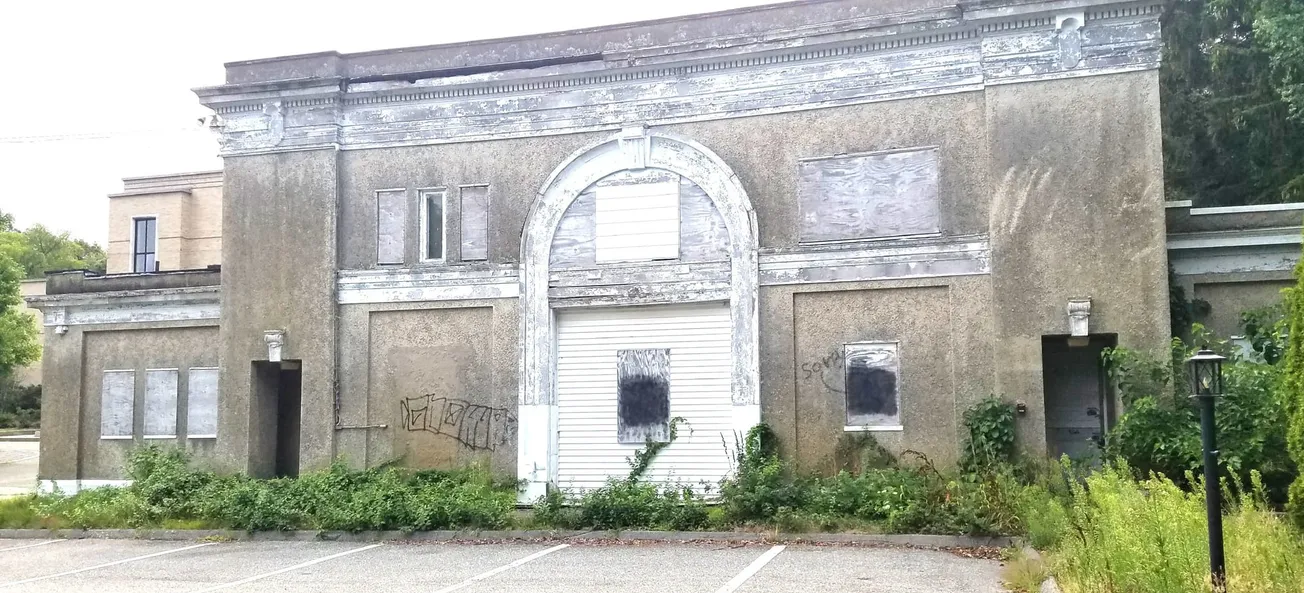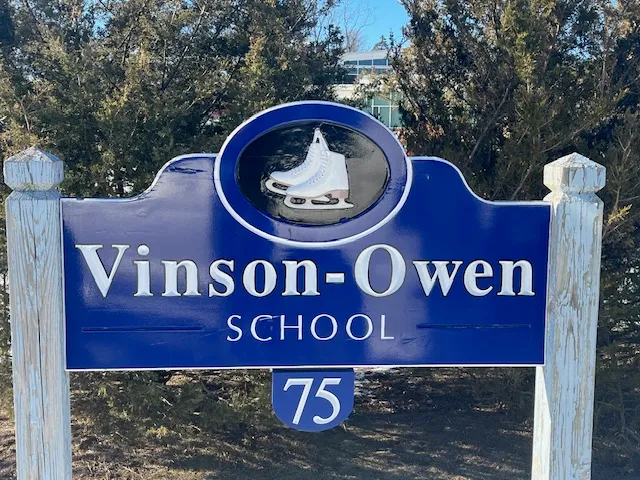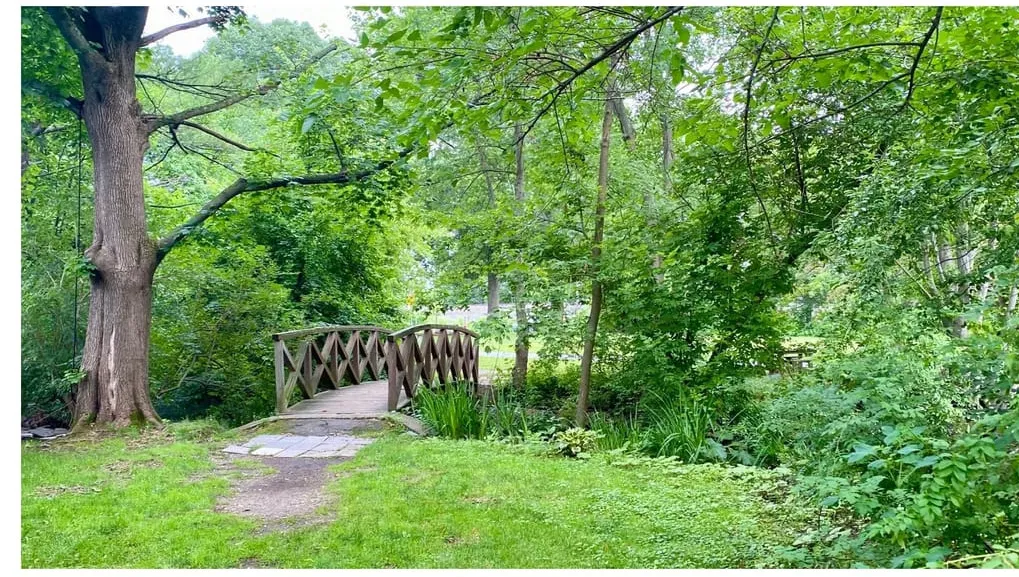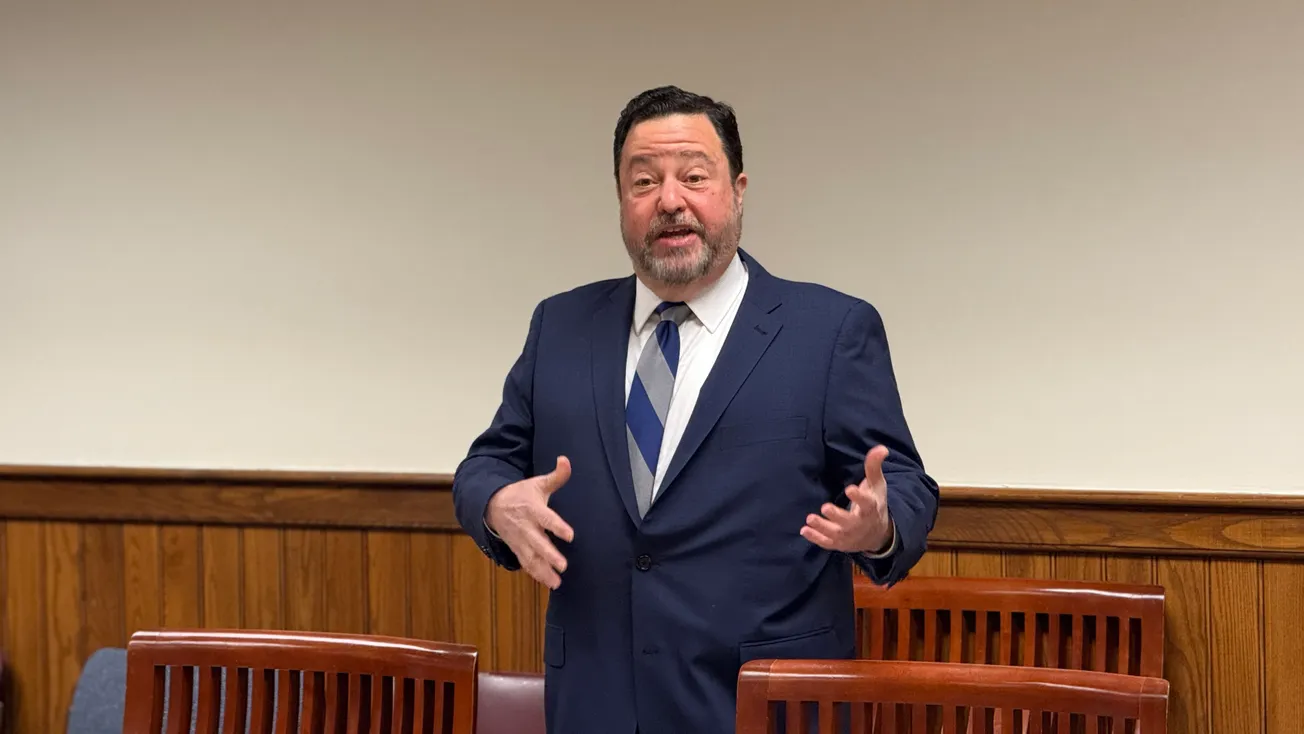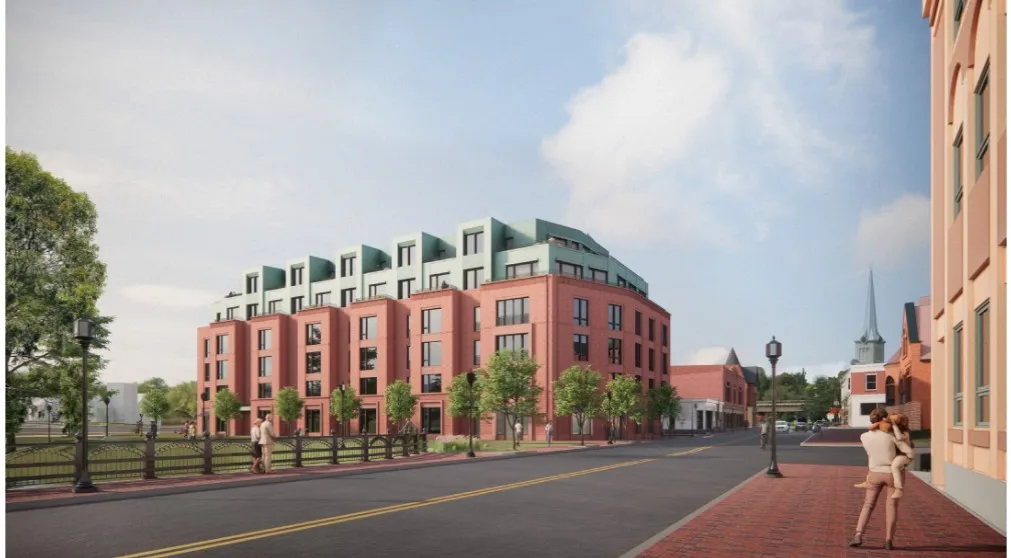Table of Contents
Not only did the Winchester Historical Commission issue a delay on an application requesting the demolition of the Sanborn House’s carriage house, it also voted unanimously to ask the School Committee to give up the property and turn it over to the town.
“I think that would be better for the School Committee than being known as the guys who demolished this beautiful building,” said Historical Commission member Michelle McCarthy. “Just give it back to the town and let someone else handle it.”
School Committee Vice Chair Tim Matthews said the committee’s ultimate goal in filing the application for demolition was to spark a community conversation on what to do next in regards to the carriage house and that they did.
The carriage house is sandwiched between the Sanborn House and the Ambrose Elementary School.
The School Committee, which has jurisdiction over the property and is listed as its owner, filed an application in July to demolish the 100+-year-old building.
As per the town’s bylaws, the Historical Commission is required to hold a public hearing to determine if the building is of historical significance. The commission voted unanimously it was of historical significance and supporters were not shy in chiding the committee for letting it fall into disrepair.
“For an outsider … I can say that the school hasn’t managed this property well for years, so maybe it’s time to give it back to the town again, so the town can manage it and find a way to save it first,” said new commission member Aysegul Mutluay Bilgic.

A little background
The Sanborn House, along with the carriage house, was built in 1906/1907 in the Beaux Arts style, explained Historical Commission Chairman Bruce Hickey. The Beaux Arts style originated in France and became popular in the late 1800s after the World’s Columbian Exposition in 1893 in Chicago.
In 1981, an application was filed to put both the carriage house and the main house on the National Registry of Historic Places..
The house was home to two families and an order of nuns before the town acquired it.
Hickey said both the house and the carriage house served a number of functions from the time the town bought it in 1969 to 2006 when it turned the stewardship of the house over to the Historical Society. However, the stewardship of the property did not extend to the carriage house. After years long negotiations, that stewardship was given to the School Committee.
Why demolition
Matthews, who represented the committee at the hearing, said the unanimous vote to demolish the building was based on long standing concerns of the Department of Public Works as well as the leadership at the Ambrose School.
Matthews said the property has been vandalized, was home to an unhoused person at one point, and though DPW has worked to keep the perimeter secure the building has been broken into a number of times, including by students at the Ambrose School.
“It’s not that we don’t understand and acknowledge the historic significance of the property,” Matthews said. “It’s that repeatedly, over a number of years … decisions were made not to maintain or upgrade the structure.”
He said there were multiple opportunities over 20+ years where potentially something could have been done about the building, but was not.
The most recent effort was in 2022 when the School Committee sought funding from Town Meeting to renovate the building to be used for School Department administrative offices, Matthews noted. It was shot down.
Matthews said the committee viewed that Town Meeting vote as an unwillingness to move forward with renovating the building.
But more than one member of the audience at last week’s hearing admitted they voted against the renovations, not because of the cost but because they didn’t like the plan.
Matthews said because of the concerns raised by DPW and the School Department, the committee was in the position where it needed to make one decision or another.
“Which was, we either needed to ask for emergency funds to demolish the building, or we needed to ask for a much larger amount of emergency funds just to stabilize the exterior perimeter of the building,” he said. “And this is the decision by a 5-0 vote that the committee made.”
Matthews also noted the ultimate decision on demolition would be Town Meeting because it would have to vote on whether or not to fund the request.
McCarthy said she toured the building the previous week and was excited to see the carriage house was actually in excellent condition, though she admitted her idea of “excellent” may differ from others “because I love old buildings.” She said the beams were in “incredible” shape and water damage was minimal.
McCarthy wondered if the School Committee discussed any alternatives or even simply “throwing up a for sale sign” instead of asking taxpayers to pay for demolition.
According to a report sent to the Select Board from the Capital Planning Committee on Aug. 18, the CPC recommended funding $300,000 from the Capital Stabilization Fund for the carriage house abatement and demolition.
The funding is not a definite, however. The CPC report stated these projects were recommended for this year’s capital cycle, but the committee asked for guidance on several matters in order to “further refine the recommendations,” one of them being whether or not there was support for the carriage house demolition.
But wait
Before the discussion on the possible demolition even got underway, McCarthy questioned if the School Committee had a legal right to make the application. After reading the lease agreement, McCarthy said, “I believe the applicant should be the town, not the School Committee.”
While Hickey said town counsel did state the School Committee has the authority, as did the School Committee’s attorney, the commission was not completely satisfied. It was decided the hearing would go forward and a vote would be taken, but it would be conditional on further review of the lease.
Back to the hearing
McCarthy also called the School Committee out for not having a conversation with the Historical Commission before filing its demolition permit. She said it’s a matter of respect among boards and committees to give a heads up when something like a demolition permit might be coming down the pipeline.
“It seems like we all should have had a seat at the table, and then maybe we wouldn’t be here,” she said.
Hickey agreed, saying the better course of action would have been to have public discussion prior to the School Committee’s June vote to demolish the building.
Historical Society President Electra Govoni said her group was surprised a request to demolish the building came before a conversation.
Govoni said she hoped the carriage house could be saved, but acknowledged the Historical Society’s focus was currently raising roughly $2 million for the main Sanborn House projects. However, she also raised the idea of tapping into the newly formed Community Preservation Commission, which provides funding for among other things, historical sites.
Planning Board member Nick Rossettos said supporting the application would set a bad precedent for demolition by neglect.
“We shouldn’t be so uncaring about our historic heritage,” he said. “It’s hard to believe that this is happening in 2025.”
Final votes
- The Historical Commission voted unanimously to ask the School Committee to release the carriage house back to the town.
- The Historical Commission also voted to find the carriage house property to be historically significant and with that, voted to impose a 12-month delay on the application for demolition.
Hickey called the votes “just the beginning” and invited the School Committee, “to the extent that it’s deemed valid” to meet with the commission to discuss alternative paths rather than demolition.
NOTE: This article has been changed to add information regarding a Capital Planning Committee report where money has been possibly set aside for the carriage house demolition.

